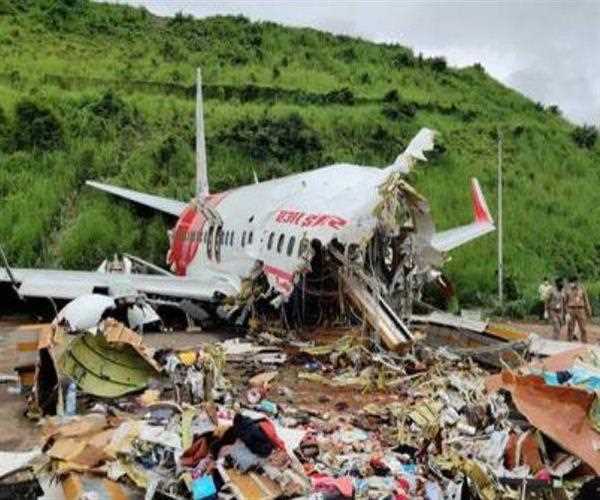Search here

10-Aug-2020
Kozhikode Airplane Crash : What Is The Lesson For Us
The Kozhikode Airplane Crash Incident has indicated to the aviation sector to improve its infrastructure. It is true that the aviation sector has improved a lot in the last decade. Nevertheless, our aviation sector is still not able to meet world-class standards as compared to many developed countries. Except the international count airports like Delhi and Mumbai in the country, the condition of the rest is pathetic. There is huge potential in the aviation sector.
The 2018 report released by the International Air Transport Association stated that India's domestic aviation market has achieved the fastest growth rate of 18.6 percent for the fourth consecutive year. Yet our aviation sector is incredible. But why? Despite the huge increase in air passengers in the country for the last decade, many tier-2 and tier-3 cities have not been connected by air routes.
Despite being equipped with modern technologies, the aviation sector seems to be suffering from widespread shortcomings. Accidents like Koelikode are the result of the same. This should alert the Indian aviation network. Possible aspects of the incident should be identified and corrected.
Initial reports of the accident suggest that the accident occurred due to short runway. Had the airport runway been longer, the accident would not have happened. However, there has been a demand to lengthen the runway for many years.
It is known that the runway of Koelikode Airport is 8,800 feet long. Aviation experts believe that landing an airplane in the rain on short runways is very risky. The possibility of sliding the wheels of the airplane increases when water accumulates or gets wet on the runway in rain. About a decade ago, something similar happened at Mangaluru airport. An Air India aircraft had crashed into the nearby hills crossing the runway while arriving from Dubai, killing 158 people. The airport authority did not learn any lesson from the incident.
Even after the accidents of Mangaluru and Kozhikode, if no vigilance was shown, such traumatic accidents would recur and air travelers would be killed untimely. The central government recently reviewed the security of airports across the country.
It was revealed in the report that there are many runways that are not fit to carry the weight of Boeing aircraft. Boeing aircraft weigh from 70 to 100 tons. At the time of landing, so much weight falls on the ground, due to which the runway has to be very strong. In the rain, small runways cause great problems.
When these aircraft land in bad weather, the rubber of their tires on the runway comes off, which increases the possibility of the aircraft slipping while braking. If the length of the runway is sufficient, the pilot is able to maintain control over the aircraft.
There is a lot of greenery around the Kozhikode Airport, so visibility is slightly lower than other airports there. In such a situation, there is always a possibility of an accident. After knowing all this, the airport management is sitting silently, waiting for the next accident and seeing it, it also happens.
In such a situation, we should learn from the airports which were built with a large investment, but due to lack of technical standards, air services were banned from there.
The Pakyong Airport in Sikkim was inaugurated by Prime Minister Narendra Modi in 2018, but only after a few months, it encountered several technical flaws, after which the operations of flights from here were restricted.
In such a situation, it should have been done, at least on the pretext, all other risky airports in the country would be identified and their shortcomings would be removed.
It is often said by the concerned experts that there is a wide scope of aviation services in India. Especially in Gorakhpur, Varanasi, Prayagraj, Agra, Ranchi, Darbhanga, Pithoragarh, Pantnagar, Bareilly and Jabalpur, there are immense possibilities of expansion in many cities of Tier-2 and Tier-3 in the northeastern states of the country.
But if technical standards in this area are ignored and accidents continue in such a way that it is clear that the cause of the accident is a flaw in the design of the runway itself, then air travelers may also have many doubts.
READ HERE MORE : Real Life Of A Soldier
Air accidents are now becoming as common as rail accidents. By the way, in the last two-three years, the railway has made substantial progress in this direction and the number of accidents has come down drastically.
When it comes to taking responsibility after plane accidents, the governments shrug off their saying that private aircraft companies also have a stake in it. In such a situation, all the agencies related to the operation of the aircraft will have to identify all the problems in an integrated manner and find solutions to them in time.

Content Writer
I am a content writter !
Join Our Newsletter
Subscribe to our newsletter to receive emails about new views posts, releases and updates.
Copyright 2010 - 2025 MindStick Software Pvt. Ltd. All Rights Reserved Privacy Policy | Terms & Conditions | Cookie Policy